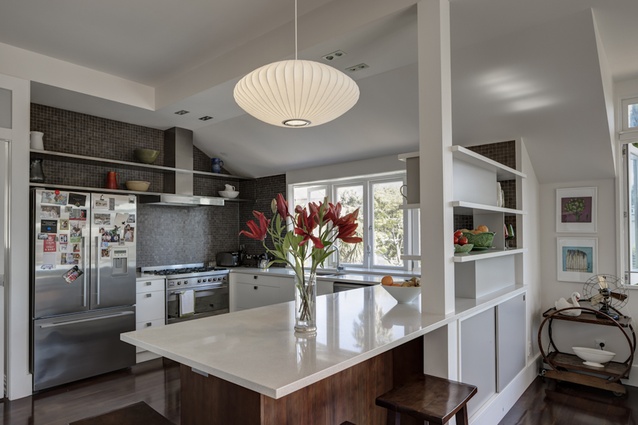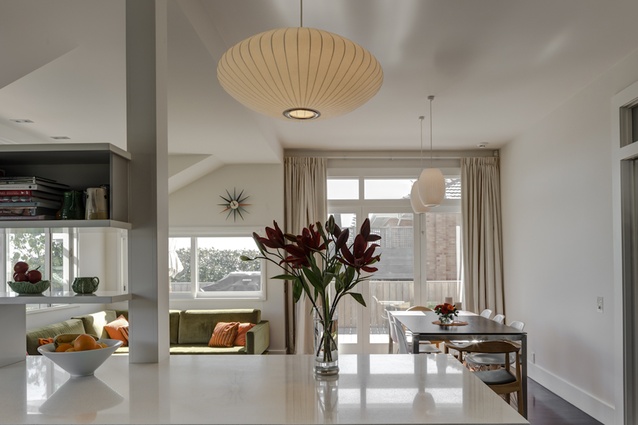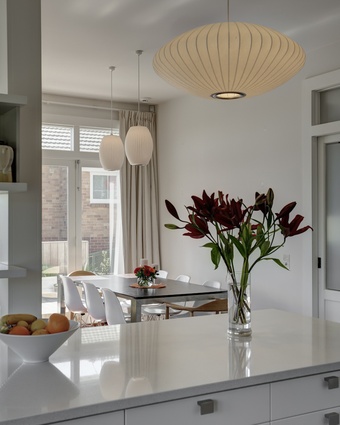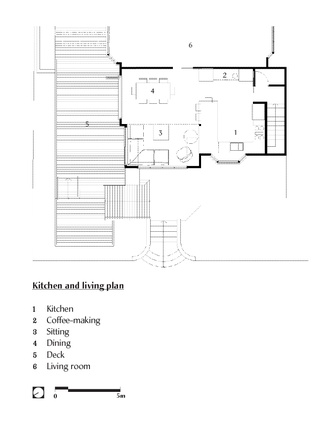Takapuna Kitchen by Megan Edwards Architects
In Auckland’s North Shore a 1920s arts-and-crafts house sits like a two-storeyed gingerbread cottage – unique and charming amongst its neighbours. The house has a category two listing with the Historic Places Trust and the new kitchen and family room, designed by architect Megan Edwards, were drafted with the approval of a heritage planner.
Kitchen renovations in old houses can be difficult. Authenticity requires a dedication to heritage that doesn’t work with how we use our kitchens now. The response to this can be to go for a farm-style kitchen – chunky wood, marble benchtop, double farmhouse sinks. The other common approach is to ignore the setting and go full-tilt modern. Edwards has cleverly avoided both with a space that is sympathetic to the feel of the house and avoids fake old-timey touches.
The clients wanted a lighter, more spacious room that had a better connection to the deck. The existing room had a steeply sloping roofline and small windows. The kitchen had been modernised from the original build but was tired and needed a more functional layout.
To create more space and light Edwards lifted a section of the existing roof up and inserted taller windows. These are bi-fold and open completely, as do the new bi-fold doors leading onto the deck. A load-bearing wall on this side created a challenge – but was incorporated into the plan as the edge of a divider bench space and open shelving. Significant pantry storage space and a small coffee preparation area are hidden behind large white doors along the opposite wall.
The materials are softly spoken – matai floors are matched by the veneer on the underside of the breakfast bar, and the cabinetry is white lacquer. Dark-grey mosaic tiles provide some texture and depth to the space and act as a link between the light white of the space and the darker matai.
This is a sensitive and thoughtful space that sits lightly and comfortably within the historic space.
















